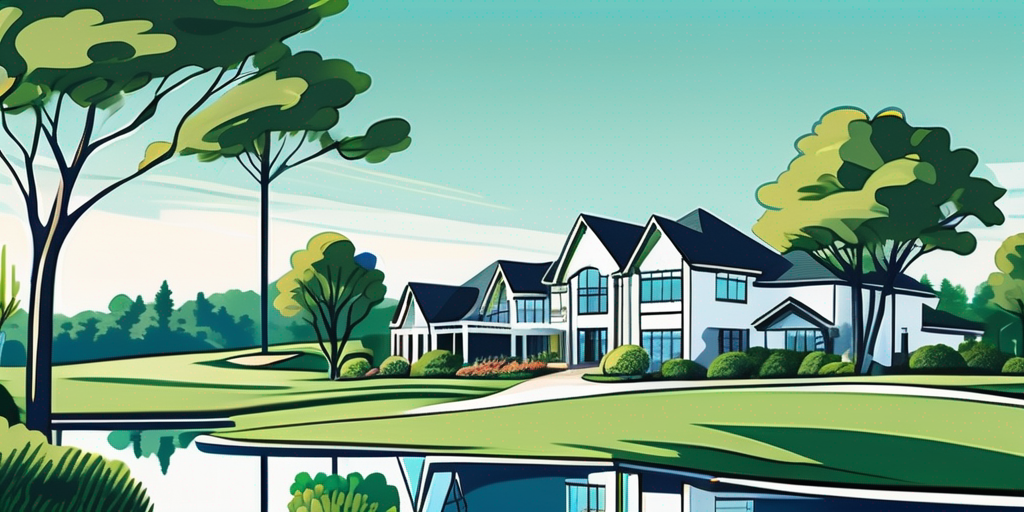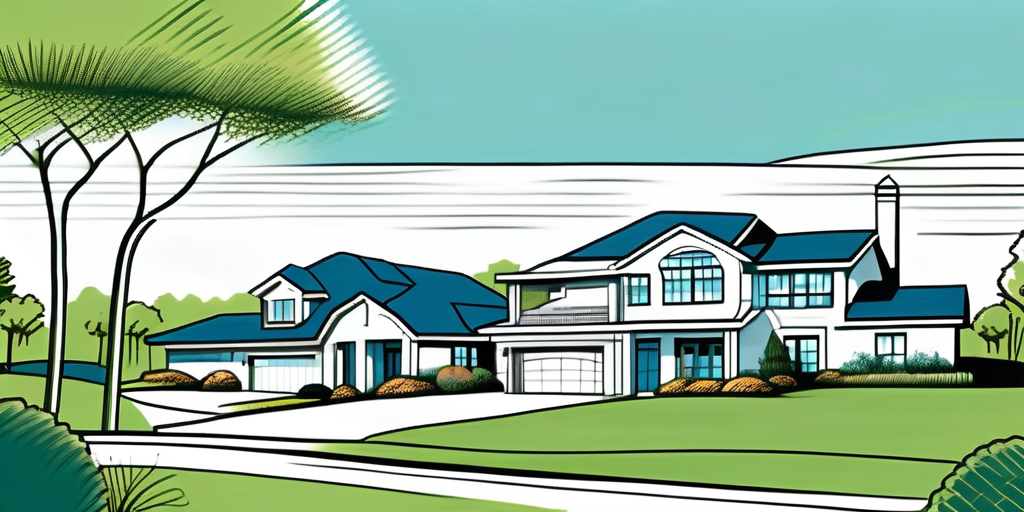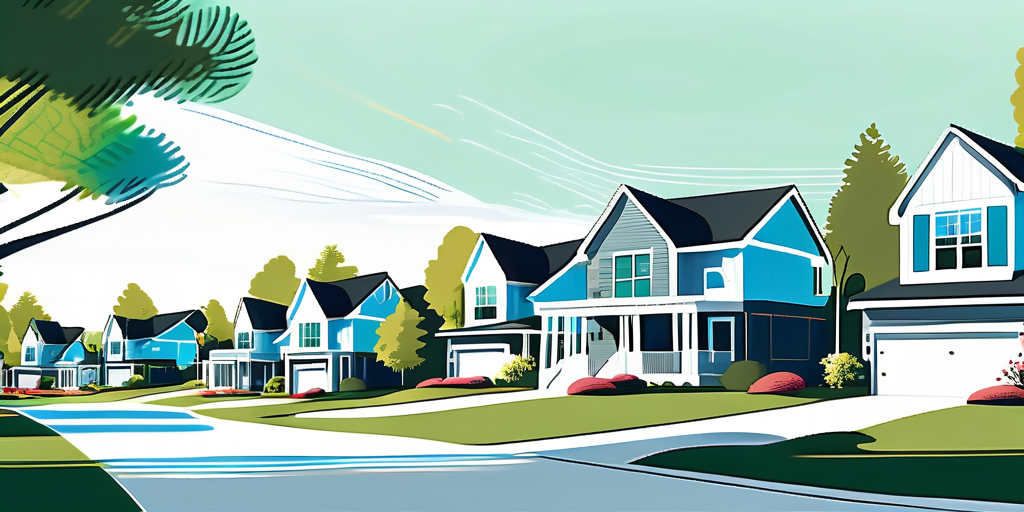
If you've ever dreamed of living where you play, a golf course community might just be your ideal haven. This comprehensive guide will walk you through everything you need to know about buying, selling, and living in golf course community real estate.
Golf course community real estate has a unique charm that appeals to many. These residential areas are often built around lush, green fairways and designed to create a lifestyle that revolves around golf. Living in one of these communities brings a myriad of experiences and amenities that are hard to match.

At its core, golf course community living blends luxury and leisure. Residents enjoy unparalleled access to golfing right outside their door, but it's more than just the sport. It's a lifestyle that fosters a sense of community among golf enthusiasts and nature lovers alike.
Imagine waking up to stunning views of the rolling greens and enjoying morning walks down the fairways. Many communities also offer a range of amenities, such as clubhouses, swimming pools, and fitness facilities, making it a hub for social activities and connection. In addition to golf, residents often have opportunities to participate in organized events, including tournaments, themed dinners, and seasonal festivals, which enrich the community experience and create lasting friendships.
Homes in these communities often come with distinct features. They are typically designed to maximize views of the golf course, with large windows and open spaces that invite natural light. Many properties boast contemporary designs and high-end finishes, catering to a luxurious lifestyle.
Moreover, lots are usually larger than typical suburban homes, offering ample space for outdoor living areas, including patios and landscaped gardens. This setup not only enhances your personal space but also promotes a sense of tranquility and privacy. Many properties also incorporate eco-friendly technologies, such as solar panels and energy-efficient appliances, appealing to environmentally conscious buyers who wish to reduce their carbon footprint while enjoying the benefits of luxurious living. Additionally, the architectural styles can vary widely, from Mediterranean villas to modern craftsman designs, allowing potential homeowners to find a residence that truly reflects their personal taste and lifestyle preferences.
Choosing to live in a golf course community comes with numerous benefits that extend beyond just playing golf. For many, it’s about the overall lifestyle and the surrounding environment.

One of the most compelling benefits is the vibrant lifestyle. Golf course communities often host numerous social events, from tournaments to themed parties, which encourages neighborly bonding. This aspect is particularly appealing to retirees or those looking to escape the hustle and bustle of urban living.
In addition to golf, many communities provide amenities such as tennis courts, hiking trails, and bike paths. The natural beauty of these environments promotes a healthy lifestyle, encouraging residents to spend more time outdoors. Many communities also feature fitness centers and swimming pools, allowing residents to engage in a variety of physical activities. The presence of these facilities fosters a sense of community, as neighbors often come together for group classes or casual meet-ups, enhancing the social fabric of the neighborhood.
Moreover, the serene landscapes of golf course communities often include meticulously landscaped gardens and scenic water features, which not only provide aesthetic pleasure but also contribute to a peaceful atmosphere. Residents can enjoy leisurely strolls or morning jogs while taking in the beauty of their surroundings, making it a perfect setting for those who value tranquility and nature.
Investing in golf course community real estate can also be a savvy financial decision. Properties in these communities often maintain or even increase their value due to their sought-after locations and amenities. This is especially true in areas where resorts and golfing activities attract seasonal visitors.
Additionally, as these communities are often well-managed by homeowner associations, the upkeep of common areas and property standards is typically high, which can enhance property values over time. It’s a great way to secure your investment while enjoying life. The demand for homes in golf course communities can also lead to a competitive market, which may provide homeowners with advantageous selling opportunities in the future.
Furthermore, many golf course communities are strategically located near urban centers, providing easy access to shopping, dining, and entertainment options. This combination of a serene living environment with proximity to city conveniences makes these properties particularly appealing to a wide range of buyers, from families to retirees. As a result, living in a golf course community not only offers a luxurious lifestyle but also represents a sound investment choice, blending leisure with financial prudence.
While the allure of a golf course community is undeniable, there are crucial factors to consider before making a purchase. Understanding these elements can help you make a more informed decision tailored to your lifestyle.
Location is king when it comes to real estate. Consider how close the community is to essential services like grocery stores, hospitals, and schools. While you might be drawn to the idea of living on the course, you don’t want to feel isolated from the conveniences of everyday life.
Additionally, think about the community's distance from major urban centers or work opportunities. A quiet life may sound appealing, but maintaining a balance with accessibility is critical. Proximity to recreational facilities, such as parks, fitness centers, and restaurants, can also enhance your living experience. If you enjoy socializing or participating in community events, being near vibrant local hotspots can greatly enrich your lifestyle.
Most golf course communities operate under a homeowners association (HOA) that sets rules and guidelines for residents. While these regulations can help maintain the beauty and order of the community, they can also impact your lifestyle. Before you buy, take the time to read through the HOA rules carefully.
Consider rules regarding property modifications, landscaping, and even the use of outdoor spaces. You want to ensure you’re comfortable with the expectations set by the community. Additionally, inquire about the HOA fees and what they cover, as these costs can vary significantly. Some associations offer amenities like clubhouses, pools, and golf course maintenance, while others may focus solely on landscaping and community upkeep. Understanding the full scope of what you're paying for can help you gauge the overall value of your investment.
Once you’ve narrowed down your options, financing is the next big step. Understanding your mortgage options and the financial implications of buying in a golf course community is essential.
Not all mortgages are created equal, particularly when it comes to luxury homes. Lenders often have their criteria for properties in golf course communities, and they may offer different rates or terms. It is wise to shop around and gather quotes from multiple lenders before committing.
Also, consider whether you want a fixed-rate or adjustable-rate mortgage. Your choice will significantly affect your long-term payments and financial stability, so weigh your options carefully. Fixed-rate mortgages provide the peace of mind of knowing your payment will remain constant throughout the life of the loan, which can be particularly beneficial in a fluctuating interest rate environment. On the other hand, adjustable-rate mortgages may offer lower initial rates, but they come with the risk of increasing payments over time, which could strain your budget if not planned for adequately.
In addition to your mortgage, property taxes can vary dramatically depending on the community's location and amenities. Rates may be higher in golf course communities due to the perceived value of the property. Make sure you factor this into your budget.
Don't forget about homeowners insurance, which may also be higher in these areas owing to the risk associated with residential properties adjacent to golf courses. It's essential to get quotes and understand the implications of insurance coverage fully. Additionally, some golf course communities may have specific insurance requirements or recommend certain providers, so it's prudent to inquire about any community guidelines that could impact your insurance choices. Furthermore, consider the potential for natural disasters or other risks that could affect your property; this might lead you to explore additional coverage options, such as flood or earthquake insurance, depending on your location.
Another factor to consider is the potential for special assessments or homeowners association (HOA) fees that are often associated with golf course communities. These fees can cover maintenance of common areas, landscaping, and security, but they can also add a significant amount to your monthly expenses. Be sure to review the HOA's financial statements and understand any upcoming projects that could lead to increased costs, ensuring that you are fully informed about the total cost of living in your desired community.
If you're looking to sell your property, being part of a golf course community can offer unique advantages. Let's explore how to prepare your home and market it effectively.

When selling a home in a golf course community, first impressions matter. Ensure your property looks its best by enhancing curb appeal. This may include landscaping, power washing the exterior, or even updating paint colors to attract potential buyers.
Additionally, staging your home can create a welcoming atmosphere. Utilize the space creatively, allowing potential buyers to envision themselves living and enjoying the lifestyle the community offers. Consider incorporating elements that reflect the local culture or the golf lifestyle, such as golf-themed decor or outdoor seating areas that overlook the course, which can help create an inviting ambiance.
Moreover, consider making small but impactful upgrades, such as modernizing fixtures or appliances, which can significantly enhance the appeal of your home. A well-maintained property not only draws in buyers but can also lead to higher offers, as it demonstrates the value of the investment they are making.
Marketing your property requires a targeted approach. Highlight the unique aspects that come with golf course community living, such as access to golf, community events, and the amenities available. Use enticing photographs that showcase both the home and the community.
Consider working with a real estate agent who specializes in golf course properties; they'll have the insight and tools to reach the right buyers. Plus, leveraging social media can boost visibility and reach potential buyers beyond just traditional channels. Engaging content, such as virtual tours or drone footage of the property and surrounding golf course, can captivate an audience and generate interest.
Additionally, hosting open houses or community events can create buzz around your property. These gatherings not only allow potential buyers to experience the community firsthand but also showcase the lifestyle that comes with living on a golf course. Providing refreshments and informational materials about the community's amenities can make a lasting impression and encourage buyers to envision themselves as part of the neighborhood.
In conclusion, exploring golf course community real estate presents a wealth of opportunities. By understanding the intricacies of these communities, you can navigate your real estate journey with confidence while enjoying a lifestyle that brings you joy and fulfillment.